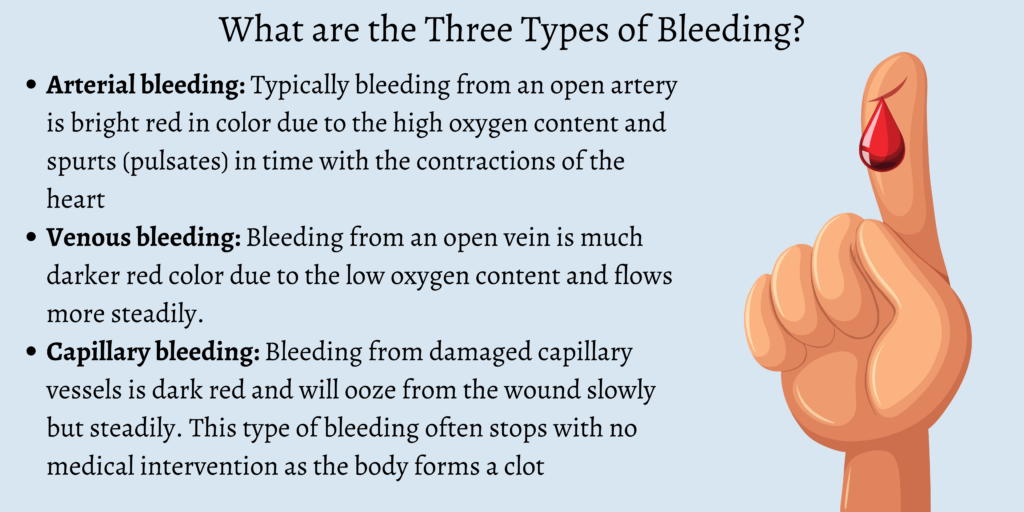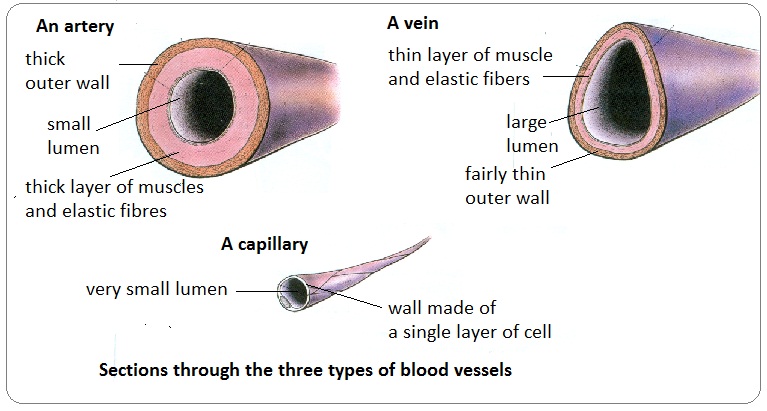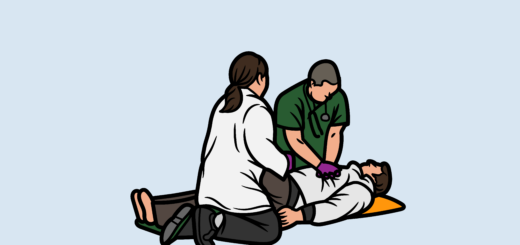What are the Three Types of Bleeding?
Severe bleeding is a life-threatening emergency situation. Major blood loss can lead to the development of shock and the collapse of the patient’s cardiovascular system. In this first aid blog post we will discuss the three major types of bleeding a first aider may encounter. The medical term for bleeding is hemorrhage.

To keep blood moving continuously through the body the circulatory system requires three elements:
- A functioning pump (the heart)
- Adequate fluid volume (blood and body fluids)
- A system of pipes, capable of adjustments in response to changes to the pump output and fluid volume (blood vessels)
All three of these elements must interact efficiently and effectively to maintain life.
The term bleeding covers a massive range of situations, from a small cut to a deep knife wound that severs an artery to ruptured internal organs from colliding with a steering wheel during a motor vehicle collision.
Broadly, bleeding can be divided into three categories depending on the blood vessels that have been damaged.

Arterial Bleeding
Arterial bleeding is the most urgent and severe type of bleeding, and one should immediately call an EMT if they witness someone experiencing it.
Since our arteries have high blood pressure and contain oxygenated blood, the blood that emerges from arterial bleeding is bright red and spurts out in rhythm with the heartbeat of the patient.
This type of bleeding could happen due to a blunt trauma, penetrating injury, or when the patient’s blood vessels or organs get damaged. It can be difficult to control since the blood, in this case, doesn’t clot or stop flowing too easily.
How to Treat Arterial Bleeding?
In order to treat arterial bleeding, apply direct pressure on the area. If the patient is in the state to do so, ask them to hold the dressing in place while you seal it using a sterile piece of gauze.
Make sure not to lift the dressing to check if the bleeding has stopped. Instead, pull your hand away to see if there is any blood leaking through.
Venous Bleeding
Although venous bleeding may not be as dangerous as arterial bleeding, it can be life-threatening since veins carry a lot of blood as well. Since the blood coming from the veins is deoxygenated, it is usually dark red in color.
With the veins having a lower blood pressure in comparison to the arteries, the flow of blood is steady, and it oozes out with less force.
How to Treat Venous Bleeding?
The way to treat venous bleeding is by applying direct pressure on the wound using a clean pad. Maintain pressure for about five minutes. Use your fingers in case the wound is small and make use of your palm if the wound is big.
Capillary Bleeding
Capillary bleeding is the least severe of the three types of bleeding and is quite common as it happens every time one’s skin gets injured. The loss of blood, in this case, is not too rapid; instead, it trickles out for a while before slowing down.
In addition to being not as life-threatening, it is also the easiest to control when compared to arterial and venous bleeding.
How to Treat Capillary Bleeding?
The way to treat capillary bleeding is the same as the other two types of bleeding. Even though capillary bleeding is not as serious, you should get in touch with emergency services if the bleeding doesn’t stop or the patient feels dizzy.
Conclusion
Knowing about the three types of bleeding helps you determine how severe the bleeding is and the next step to take.
Bleeding can either be internal or external. If you see someone going through heavy external bleeding or you suspect that they could be bleeding internally, call up emergency medical services immediately.





